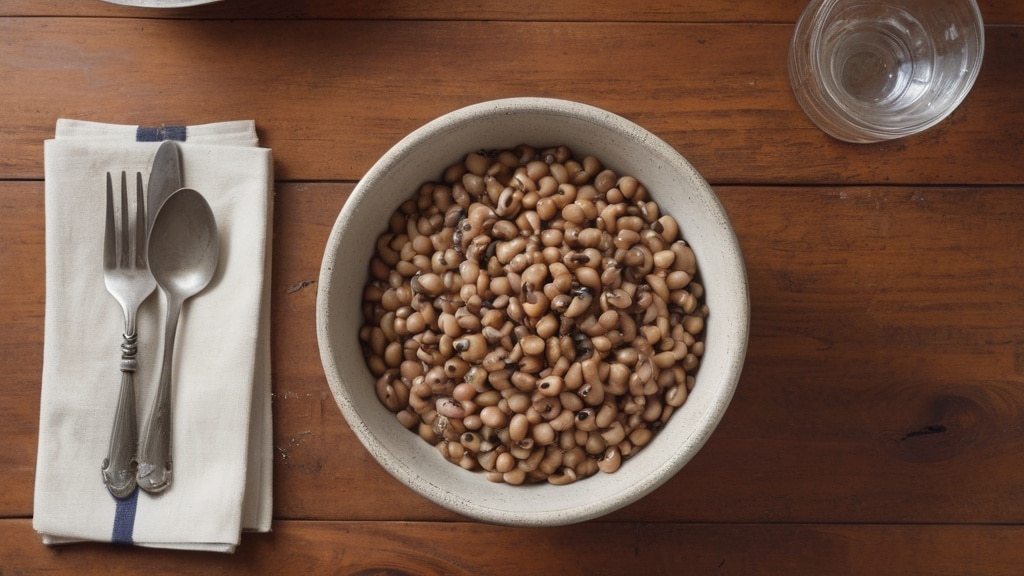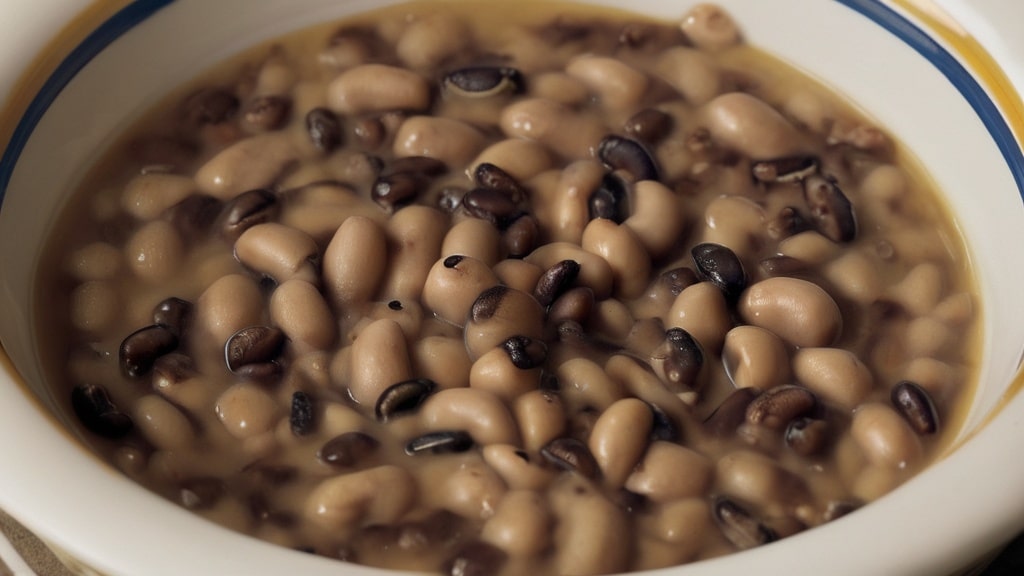Let me tell ya black-eyed peas have been on my stove every New Year’s Day for as long as I can remember. My granny used to say if you didn’t eat a spoonful, you were tempting bad luck. As a kid, I didn’t understand the superstition, but I sure did love the smell that filled the house. Smoky, savory, something rich and old like history boiling on the back burner.
But here’s the thing. Southern Black-Eyed Peas aren’t just about tradition. They’re a dish of deep roots and even deeper flavor. They tell a story of survival, adaptation, and comfort cooked slow and seasoned with soul.
This isn’t just a pot of legumes. It’s a cultural landmark. Earthy, meaty, smoky. Loaded with umami before that word ever made it to Southern kitchens. Whether you grew up with them or you’re new to this dish, black-eyed peas deserve more respect than they often get. And done right? Whew. They’ll change your mind about what a humble little legume can do.
What Are Southern Black-Eyed Peas?
Southern Black-Eyed Peas are a savory stew-like dish made from dried black-eyed peas, cooked low and slow with onions, garlic, spices, and usually some form of smoked pork. Think ham hock, bacon, or smoked turkey if you’re keeping kosher.
It’s most famously eaten on New Year’s Day across the American South, meant to bring good fortune. But honestly, it’s far too good to save for once a year. Rich broth, meltingly tender peas, and that deep smoky flavor—this is the kind of dish that hugs you from the inside.
These peas ain’t flashy. But they’re foundational. They’re Southern identity in a pot.
Ingredients & Substitutions
Dried Black-Eyed Peas
Start with dried. Always. Canned just don’t have the same bite or ability to soak up the flavor. Look for peas that are cream-colored with that dark little eye—avoid shriveled or cracked ones.
Smoked Ham Hock or Smoked Turkey Leg
This is where the soul lives. Ham hocks give you collagen and fat and smoke. Turkey’s great if you don’t eat pork—just make sure it’s deeply smoked.
Yellow Onion
One big one. Chopped kinda rough. You want it to melt into the broth.
Garlic
Three cloves at least. Smash ’em, don’t mince too fine. Let them perfume the whole pot.
Celery & Bell Pepper (Optional)
Not always traditional, but they round out the flavor like a holy trinity in disguise.
Bay Leaf & Thyme
Dried thyme works fine. Fresh if you’ve got it. One bay leaf—don’t overdo it.
Cayenne Pepper or Red Pepper Flakes
Not to make it spicy. Just to give it a little backbone.
Salt & Black Pepper
Don’t add all the salt up front. Wait till the peas are soft or they might toughen.
Chicken Broth or Water
Use low-sodium broth for more flavor control. Water will do if you’ve got a good ham hock.
Substitutions:
- Vegan? Skip the meat and double the aromatics. Add smoked paprika and a splash of liquid smoke.
- No black-eyed peas? Crowder peas or field peas can work, but the flavor changes a bit.
- No fresh garlic? Use 1 tsp garlic powder per clove. It ain’t the same but it gets the job done.
Step-by-Step Instructions

- Soak the peas.
Overnight is best. Cover ’em with a few inches of water. If you’re in a rush, do a quick soak: boil for 5 minutes, then rest for an hour. - Sauté the base.
In a big ol’ pot (Dutch oven is perfect), heat a bit of oil. Sauté onions, garlic, and celery till soft. You want them translucent and just a little golden. That’s flavor building. - Add the smoked meat.
Nestle in the ham hock or turkey leg. Let it sizzle in the pot for a couple minutes to wake it up. Let it kiss the bottom of the pan. - Pour in the peas and liquid.
Drain the peas, then add them to the pot. Cover with broth or water—about 6 to 8 cups, depending on how brothy you like it. - Add seasonings.
Toss in the bay leaf, thyme, cayenne, and black pepper. Hold off on salt for now. - Simmer low and slow.
Bring to a boil, then drop to a gentle simmer. Let it go for 1.5 to 2 hours. Stir every so often, scraping the bottom gently. - Final seasoning.
When the peas are soft and the meat is falling off the bone, taste. Add salt now. If it needs acid, a splash of vinegar or hot sauce goes a long way. - Shred the meat.
Pull out the bone and shred the meat into the pot. Discard the fat if you want, or stir it back in for richness.
Tips:
- Don’t boil too hard or the peas will burst open and turn to mush.
- If it starts to dry out, just add more water or broth. It’s forgiving.
- For a creamier texture, mash a scoop of peas against the side of the pot.
Cooking Techniques & Science
Let’s talk about why this works.
Soaking: It softens the outer shell and shortens cook time. More importantly, it helps the peas cook evenly.
Simmering low: Cooking gently prevents the peas from breaking apart. It also lets the collagen from the ham hock melt into the broth, thickening it naturally.
Flavor layering: Sautéing the aromatics builds the base. Adding the meat early lets its flavor permeate the entire dish.
Resting: Letting the pot sit for 30 minutes off heat before serving? Game changer. Everything mellows out and comes together.
And don’t skip the acid at the end. Just a little vinegar or a few dashes of hot sauce cuts through the richness and wakes the whole thing up.
Serving & Pairing Suggestions

You want cornbread. Not sweet cornbread. The real stuff—gritty, crusty, and a little salty.
Add a side of braised collards or mustard greens with a hit of vinegar.
Rice? Oh yeah. Especially if you’re going Carolina-style.
A chilled glass of sweet tea, or if it’s winter, maybe a dark lager or bourbon over one big cube.
And don’t be shy about a dash of hot sauce on top. Crystal or Texas Pete, if you know what’s what.
Presentation-wise? A wide shallow bowl, maybe a sprinkle of chopped green onion or a little crumbled bacon on top. Rustic is best.
Conclusion
Southern Black-Eyed Peas might not look fancy. But they carry history, pride, and comfort all in one pot. They’re proof that good food doesn’t have to be complicated it just needs care and time.
What makes this dish special isn’t just the ingredients it’s how they’re treated. The layering of flavor. The patience in cooking. The reverence for something simple done right.

